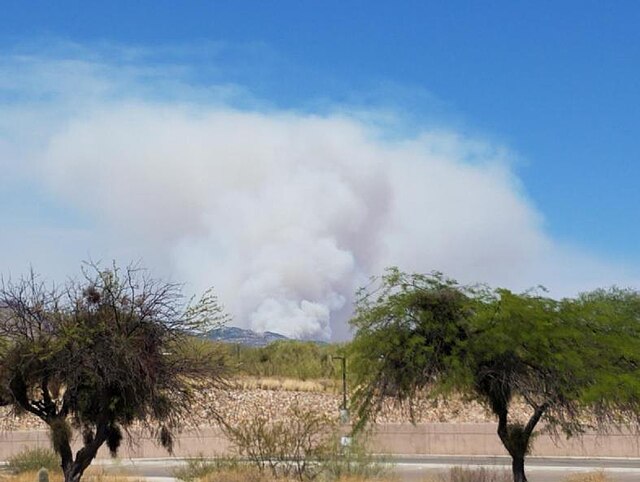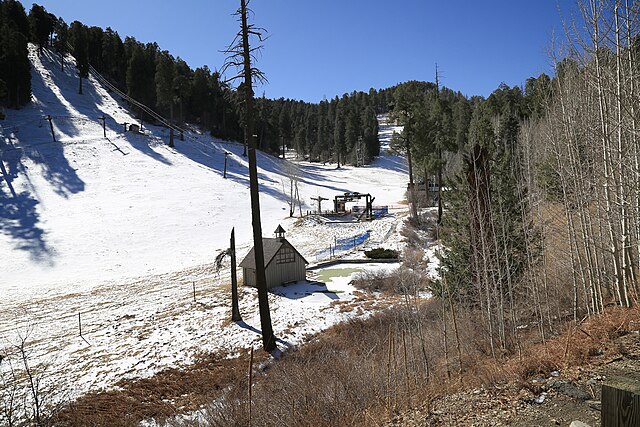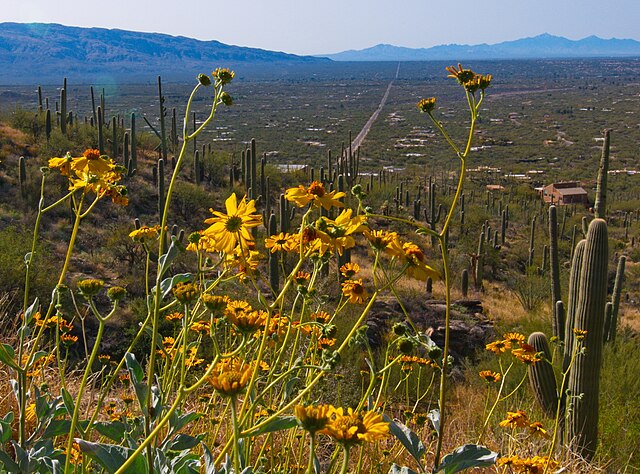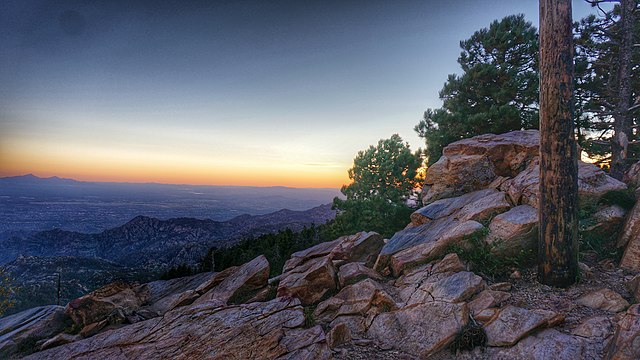Ever wondered what it’s like to escape the desert heat and step into a cool, pine-scented paradise just an hour from Tucson? Mount Lemmon, Arizona’s hidden gem, offers a refreshing retreat with weather that’s as diverse as its landscapes. Whether you’re planning a hike, a ski trip, or a cozy cabin getaway, understanding Mount Lemmon’s weather is key to making the most of your adventure. Let’s dive into the seasonal shifts, microclimates, and practical tips to help you plan your visit to this stunning mountain destination.
Why Mount Lemmon’s Weather Stands Out
Picture this: it’s a scorching 100°F in Tucson, but up on Mount Lemmon, you’re sipping hot cocoa in a crisp 65°F breeze. The mountain’s elevation—rising from 2,800 feet at the base to over 9,000 feet at the summit—creates a dramatic shift in climate. This unique microclimate makes Mount Lemmon a year-round destination, offering everything from snowy winters to mild summers. But what makes its weather so special, and how can you prepare for it?
Elevation: The Game-Changer
Mount Lemmon’s towering height is the secret sauce behind its cooler temps. For every 1,000 feet you climb, the temperature drops about 3-5°F. That means the summit can be 20-30°F cooler than Tucson’s desert floor. This elevation gradient creates a range of ecosystems, from saguaro-studded foothills to alpine forests, each with its own weather quirks. So, while Tucson swelters, Mount Lemmon offers a refreshing escape.
Microclimates: A Weather Rollercoaster
One minute you’re in shorts, the next you’re reaching for a jacket. Mount Lemmon’s microclimates vary drastically depending on where you are. The lower elevations feel like the desert, with hot days and mild nights, while the summit mimics a Rocky Mountain vibe with chilly mornings and breezy afternoons. These shifts can catch visitors off guard, so checking hyper-local forecasts is a must.
Seasonal Weather Breakdown on Mount Lemmon

Mount Lemmon’s weather changes with the seasons, each offering a unique vibe for outdoor enthusiasts. Let’s break it down season by season so you know exactly what to expect—and how to pack.
Spring (March-May): A Time of Transition
Spring on Mount Lemmon is like a choose-your-own-adventure book. Early March might still have snow at higher elevations, perfect for late-season skiing at Ski Valley. By May, wildflowers bloom, and daytime temps hover between 50-70°F at the summit. However, spring showers are common, so pack a lightweight rain jacket. Nighttime can dip into the 30s, so layers are your best friend.
Activities for Spring
Spring is prime time for hiking trails like the Butterfly Trail or Marshall Gulch. The cooler weather makes it ideal for exploring without overheating. Just watch for sudden rainstorms—they can turn trails muddy fast. Birdwatchers, bring your binoculars; spring migration brings colorful species to the mountain.
Summer (June-August): Cool Relief from the Heat
While Tucson bakes in triple-digit heat, Mount Lemmon’s summer is a breath of fresh air. Daytime highs at the summit rarely exceed 80°F, with nights dropping to the 50s. Monsoon season, typically July to August, brings afternoon thunderstorms, lightning, and heavy rain. These storms are dramatic but brief, often clearing up for stunning sunsets.
Monsoon Safety Tips
Monsoons are no joke—flash floods and lightning strikes are real risks. Stick to morning hikes to avoid afternoon storms. If you hear thunder, head to lower ground and avoid open areas. A waterproof backpack cover is a lifesaver for keeping gear dry during sudden downpours.
Fall (September-November): Perfect Hiking Weather
Fall is Mount Lemmon’s golden season. Temps range from 40-70°F, with clear skies and vibrant foliage painting the mountain in reds and golds. It’s the perfect time for outdoor activities like camping or biking along the scenic Catalina Highway. Lower humidity makes it feel crisp and comfortable, but nights can get chilly, so pack a fleece.
Fall Festivals and Events
Fall brings events like the Mount Lemmon Oktoberfest, where you can sip craft brews and enjoy live music against a backdrop of autumn colors. Check local event calendars for dates, as these festivals draw crowds from Tucson and beyond.
Winter (December-February): A Snowy Surprise

Yes, it snows in Arizona! Mount Lemmon’s winter transforms the summit into a snowy wonderland, with temps ranging from 20-50°F. Snowfall can vary from light dustings to several feet, especially in January. Ski Valley, the southernmost ski resort in the U.S., is a big draw for skiers and snowboarders. Lower elevations stay milder, making winter a great time for versatile adventures.
Winter Gear Essentials
Planning to hit the slopes or snowshoe? Pack warm layers, waterproof boots, and gloves. Snow chains for your car are a must if you’re driving up during a storm—Catalina Highway can get slick. For cozy cabin stays, bring a good book and some hot cocoa mix.
How to Check Mount Lemmon’s Weather Forecast
Weather on Mount Lemmon can change faster than you can say “monsoon.” So, how do you stay ahead of it? Hyper-local forecasts are your best bet. Websites like the National Weather Service or apps like AccuWeather provide detailed breakdowns by elevation. For real-time updates, check webcams at Ski Valley or local Tucson news sites.
Why Elevation-Specific Forecasts Matter
A forecast for Tucson won’t cut it. The summit and base can have completely different conditions on the same day. For example, a sunny 80°F day in Tucson might mean 50°F and rain at the top. Always check forecasts for specific areas like Summerhaven or Ski Valley to avoid surprises.
Packing for Mount Lemmon’s Weather
Packing for Mount Lemmon is like preparing for a trip with multiple personalities. Layers are key, no matter the season. Think lightweight base layers, a fleece or sweater, and a waterproof jacket. Sturdy hiking boots are a must for trails, and don’t forget sunscreen—UV rays are intense at higher elevations.
Seasonal Packing Checklist
Here’s a quick guide:
- Spring: Rain jacket, hiking boots, light sweater.
- Summer: Hat, sunscreen, water bottle, rain poncho.
- Fall: Fleece, long-sleeve shirts, camera for foliage shots.
- Winter: Warm coat, gloves, snow chains for driving.
Pro tip: Keep a small backpack with essentials in your car for spontaneous trips.
Weather Impacts on Activities

Mount Lemmon’s weather shapes what you can do. Summer monsoons might limit afternoon hikes but create stunning waterfalls. Winter snow opens up skiing but can close trails. Always check trail conditions and road closures before heading out, especially in winter or monsoon season.
Top Activities by Season
Here’s what shines when:
- Spring: Hiking, birdwatching, wildflower photography.
- Summer: Morning hikes, stargazing, picnics.
- Fall: Biking, camping, fall festivals.
- Winter: Skiing, snowshoeing, cozy cabin retreats.
No matter the season, there’s always something to do—just plan around the weather.
Driving to Mount Lemmon: Weather Considerations
The Catalina Highway is a scenic stunner, but weather can make it tricky. Winter snow and ice can lead to road closures, while summer monsoons might cause flash floods in low areas. Check road conditions via the Pima County Sheriff’s Department or Arizona DOT before you go. A 4WD vehicle is handy in winter, but a standard car works fine most days with caution.
Tips for Safe Driving
Slow down on curves, especially in wet or icy conditions. Keep an emergency kit in your car—blankets, water, snacks, and a flashlight. If snow chains are required, practice putting them on before you hit the road. Nobody wants to fumble with chains in a blizzard!
Local Weather Resources and Tools
Besides national weather apps, local resources like Tucson’s KVOA or KGUN9 offer Mount Lemmon-specific forecasts. The Mount Lemmon General Store in Summerhaven sometimes posts weather updates on social media, giving you a boots-on-the-ground perspective. Webcams at Ski Valley are great for a real-time peek at conditions.
Climate Change and Mount Lemmon’s Weather
Climate change is shaking things up on Mount Lemmon. Warmer winters mean less snow, impacting ski season, while stronger monsoons increase flash flood risks. Local ecologists note that shifting weather patterns could affect the mountain’s ecosystems, from pine forests to wildlife. Staying informed about long-term trends can help you plan sustainable visits.
How to Be a Responsible Visitor
Stick to marked trails to protect fragile ecosystems. Pack out all trash, and consider carpooling to reduce emissions. Supporting local businesses, like the Cookie Cabin or Mount Lemmon Lodge, keeps the community thriving while minimizing your environmental footprint.
Conclusion
Mount Lemmon’s weather is as dynamic as the mountain itself, offering a little something for everyone, from snowy ski days to sunny summer hikes. By understanding its seasonal shifts, microclimates, and elevation-driven quirks, you can plan a trip that’s both safe and unforgettable. Whether you’re chasing wildflowers in spring or cozying up in a winter cabin, Mount Lemmon delivers a unique escape from Tucson’s desert heat. So, grab your layers, check the forecast, and hit the road—your mountain adventure awaits!
FAQs
1. What’s the best time of year to visit Mount Lemmon?
It depends on your vibe! Fall (September-November) offers mild temps and stunning foliage, while winter (December-February) is great for snow sports. Spring is perfect for wildflowers, and summer provides cool relief from Tucson’s heat.
2. Does it really snow on Mount Lemmon?
Absolutely! The summit can get several feet of snow in winter, especially in January, making it a hotspot for skiing and snowshoeing.
3. How do I prepare for monsoon season on Mount Lemmon?
Hike in the morning to avoid afternoon storms, carry a rain poncho, and stay away from open areas during lightning. Check forecasts for flash flood warnings.
4. Can I drive to Mount Lemmon in winter?
Yes, but check road conditions first. Snow and ice can make Catalina Highway tricky, so snow chains and a well-stocked emergency kit are smart.
5. Are there weather apps specific to Mount Lemmon?
No apps are exclusive to Mount Lemmon, but AccuWeather or the National Weather Service offer elevation-specific forecasts. Local news sites like KVOA also provide updates.

